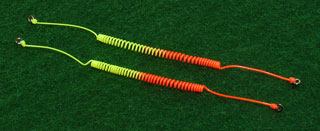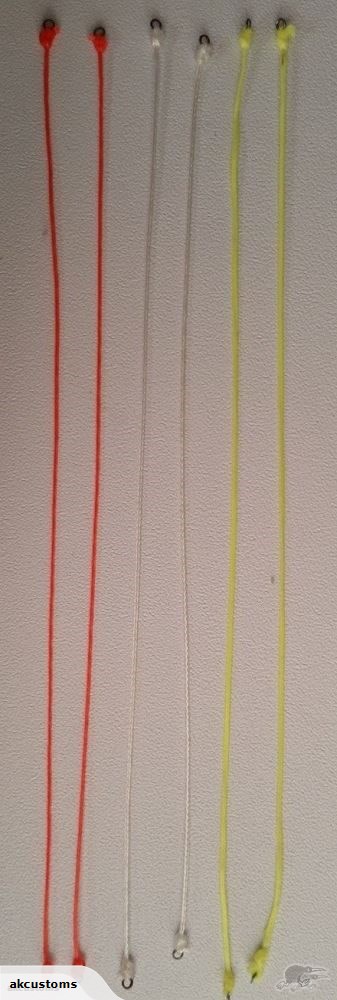We’ve been getting inquiries from some of our Trade Me customers regarding “Czech nymphing”, looking for some tips and tricks. European nymphing methods have really come into their own over the last few years here in New Zealand and it’s currently all the rage on the North Island. There seems to be a general confusion around the methods in terms of how, when and where to use them. Fly fisherman seem to be under the impression that European methods are a silver bullet and will always outperform every other method, which simply isn’t the case. So, to help alleviate some of that confusion we’ve written this how-to guide. While we aren’t professional fishermen, we do average over 600 hours a year of river time (some years considerably more). What we’ve laid out below works for us and hopefully answers a lot of your questions.
THE GEAR
There are four main types of European long-leader nymphing techniques: Spanish, Polish, French and Czech. Here in New Zealand it seems that everyone groups them all together as one and refers to the lot as “Czech nymphing”. The Czech method is actually very specific and is designed for close-quarters fishing (less than 10 meters from your rod tip) on smaller rivers. Regardless of what method you use the fly rod best suited are all the same. Ideally you will be using a 10ft or longer rod, in weight 4. The length of the rod is your friend here. It makes it easier to get the flies out to where the fish are so a 10ft is really the minimum length. Rods designed specifically for Euro-nymphing have a soft tip on them. There are a number of manufacturers that produce them now, so shop around. Zee swears by his new Greys Streamflex GR70 and highly recommends it. We have a mixture of Batson Rainshadows, which don’t have a soft tip, and Hook and Hackle XI Series. These are of course available only as blanks. If you wrap your own rod there are even more options in terms of blanks.

Your reel, regardless of the method used, should be light and have an excellent, dependable drag. Since you are using a light rod it’s essential that you have a drag capable of muscling large fish. What you load the reel up with depends on the nymphing method and we’ll discuss that in detail below.
CZECH NYMPHING
As discussed above, true Czech nymphing is designed for close-quarters fishing. Rivers like the Hinemaiaia or the Waitahanui are perfect for this method. It’s a superior method in this type of river for a number of reasons. Firstly, the fish are often lying deep in holes that are short so you have a very limited window to get down to them. You need to get your flies down deep quickly. Czech nymphing uses weighted flies and the monofilament line provides little resistance to the flies as they sink. Secondly, this type of water often has fractured water column speeds. A yarn indicator on the surface of the water will be moving much faster than the slow water down where the fish are, creating drag issues with your presentation and not allowing your fly to fully sink. Lastly, it is a stealth method, there are no yarn indicators or fat fly lines slapping the water surface. There are draw backs though. Heaps of wind and slow moving currents are your enemies when fishing in this manner. It’s best to find some spot protected from the wind with a swift moving current.
The reel is set up exactly how you would normally, with backing and then a good-quality floating line. You’ll then tie on 10 meters of heavier monofilament, we use 12# test. At the end of this line you then tie on your Euro-indicator. There are coloured monofilaments available, but we find these not only harder to see than our versions, but they also aren’t re-usable, where as ours will last for seasons. There are also some very fancy, spring-type versions as well. Whatever you choose, make sure your knots are tight. Using some UV Knot Sense isn’t a bad idea here.



After the indicator you’ll tie on your leader. Czech nymphing is typically done with 3 flies on a dropper rig. We find it saves time on the river to have a few of these pre-tied so that when you lose some flies you can quickly re-rig. And you will lose flies. Lots of them. You are fishing on the bottom of the river and you’ll be snagging all sorts of things.

Now that you are all rigged up it’s time to discuss the method itself. Stand perpendicularly to the flow of the river. Peel off some monofilament from your reel and lob your fly out. You want to cast upstream, at the 2 o’clock position. It’s difficult for me to describe accurately how the cast is done but essentially you are using the weight of the flies to load the rod. False casting is not really required. You want the fly line to remain in your guides, if you allow it to extend past the tip of the rod it will drag you flies toward you as the line relaxes back. Having the floating line in your guides also helps to load the rod, making casting of the monofilament easier. As the flies are sinking in the current, pull your rod tip up high to take out any slack. You want a firm connection between your rod tip and the flies to feel for hits, but not too tight and you’ll be dragging the flies off the bottom. Lead the flies with your rod tip as they tumble downstream. You should be able to feel the flies bumping along the bottom. To reduce the amount of times you snag bottom, you can give the rod tip a slight upward pull to lift the flies off the bottom temporarily. In terms of leading the flies, think of it as dragging a column of three flies horizontally through the water. Your rod tip should reach the 10 o’clock position before the flies do. As soon as your rod reaches the 10 o’clock position, give your line a tug and re-cast. The cast will feel very odd at first, but with some practice it becomes second nature.
Gink and Gasoline, an awesome fly fishing blog, has a great Czech nymphing guide as well (link).
FRENCH NYMHING
This is the method that we prefer. It varies from Czech nymphing in the set up and also the casting range. The French method allows you to cast much farther, 30 meters or more in the right situation.
You’ll need a reel or a spare spool dedicated to this method. Load the reel with more backing than normal, leaving around 15mm of space between the backing and the reel. Tie on heavy monofilament, again we use 12# test. This is your running line. We normally put on around 100 meters.
Now attach your indicator, exactly the same as described above for Czech nymphing. The rig we use is a dropper as well, but with only 2 flies. You can try this technique with 3, but we find it’s a pretty sure way to get tangled almost immediately because of the casting technique. We’ve previously posted the leader details, here is the illustration again:
![20151021_201929[1]](https://akcustomsblog.files.wordpress.com/2015/10/20151021_20192911-e1445417822552.jpg?w=1000)
This method is effective on smaller rivers, just as effective as Czech nymphing, and it can also be used larger rivers like the Tongariro and the Mohaka. The difference is the ability to cast long distances.
Again, it’s difficult ot describe how to cast since it’s quite different than traditional nymphing. Essentially you will be using the same 2 o’clock casting target as in Czech nymphing. You can pull off a significant length of monofilament and allow it to drift below you in the river. To get the rod loaded you need to have enough weight on it, from the flies, so to start casting the indicator should be within a rods’ length of the tip. This time you will want to false cast. With each false cast, let out some more monofilament. On your last false cast allow the line to freely shoot out . This is how you get your real distance. We recommend practicing this, as it will take some getting used to.
Now that you’ve cast your line out far upstream you now need to raise the rod to take out slack. You may also need to retrieve some of the monofilament with your left hand. Keep the rod high and follow the flies with a sweeping motion. Unlike Czech nymphing you can allow the flies to fully swing behind you. As the flies pass 10 o’clock slowly lower the rod. At the end of the swing your rod tip should be at water level. You can give the line a little tug or two to simulate a rising bug. Now that the line is fully extended below you, pull the line and recast.
The indicator in this case is more of a depth indicator. You will feel fish strike. You can adjust the distance the indicator is above or below the water as pools vary in depth.
It’s also important to set the hook properly when a fish does strike. Any bump in the line that you aren’t totally sure if it may be a fish or bottom, strike. While some fish will hit your rig hard, others will lightly mouth the fly and then let it go. These strikes are almost imperceptible.
That should get you started and hopefully answer some of the questions out there. We encourage you to read as many write ups on Euro-nymphng as you can and watch any number of Youtube videos on the subject. You won’t be proficient at it right away but with a little practice you should be increasing your catch rates.